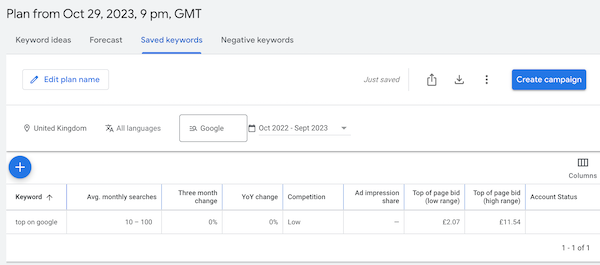Increasing your internet domain authority (often referred to simply as "domain authority" or "DA") involves a combination of strategies aimed at improving the overall quality and reputation of your website. Here are some effective ways to enhance your domain authority:
1. Produce High-Quality Content: - Regularly create original, well-researched, and value-driven content tailored for your target audience. - Ensure the content is easily readable, structured with headings, bullet points, and relevant images.
2. Optimize On-Page SEO: - Ensure title tags, meta descriptions, header tags, and content are optimized for relevant keywords. - Use a clean and SEO-friendly URL structure. - Optimize images with descriptive alt tags.
3. Improve Internal Linking: - Use a logical internal link structure to connect related articles and pages within your site. - This helps distribute page authority throughout your domain and enhances user navigation.
4. Build High-Quality Backlinks: - Aim for backlinks from authoritative, relevant, and reputable websites. - Avoid black-hat SEO techniques, such as buying links or using link farms. - Engage in legitimate link-building activities like guest posting, influencer outreach, and content syndication.
5. Ensure Mobile Responsiveness: - With the rise of mobile search, having a mobile-friendly website is essential. Ensure your site looks and functions well on various devices.
6. Speed Up Your Website: - Website loading speed is a ranking factor. Optimize images, leverage browser caching, minimize CSS and JavaScript, and consider using a Content Delivery Network (CDN).
7. Secure Your Website: - Migrate to HTTPS for a secure connection, as search engines give preference to secure sites.
8. Remove Toxic Backlinks: - Regularly audit your backlink profile to identify and disavow low-quality or spammy links pointing to your site.
9. Promote Social Engagement: - While social signals aren't a direct ranking factor for domain authority, a strong social presence can increase brand visibility and lead to more organic backlink opportunities.
10. Ensure a Strong Technical SEO Foundation: - Use schema markup for better search result displays. - Ensure your site has a clear XML sitemap and robots.txt file for search engine crawlers. - Address crawl errors and broken links.
11. Increase User Engagement: - A lower bounce rate and higher session duration can indicate a positive user experience, indirectly influencing domain authority. - Improve site design, content quality, and user experience to keep visitors engaged.
12. Regularly Update Content: - Refresh outdated content to maintain its relevance, which can attract more backlinks and improve user engagement.
13. Be Patient and Consistent: - Building domain authority takes time. Stay consistent with your SEO efforts, and be wary of shortcuts or black-hat techniques that promise quick results. Remember that while domain authority is a useful metric, it's just one of many. Focus on providing value to your users, maintaining best SEO practices, and over time, you'll see improvements in both your domain authority and overall website performance.

What Other Ways Can I Climb the SERP?
Top of Page
Climbing the Search Engine Results Page (SERP) involves a multifaceted approach that goes beyond just domain authority. Here are various strategies to help improve your website's SERP ranking:
1. Keyword Research: - Identify and target relevant keywords that your audience is searching for. - Use tools like Google Keyword Planner, SEMrush, Ahrefs, or Ubersuggest.
2. Optimize Content for Search Intent: - Understand the intent behind the keywords (informational, transactional, navigational, etc.) and tailor your content to match.
3. Rich Snippets and Schema Markup: - Use schema markup to enhance your listings in SERPs with rich snippets, which can include ratings, prices, and more.
4. Improve Page Load Speed: - Optimize images, leverage browser caching, minimize server response times, and reduce redirects.
5. Mobile Optimization: - Ensure your site is mobile-friendly, especially since Google follows a mobile-first indexing approach.
6. Secure and Accessible Website: - An SSL certificate (resulting in HTTPS rather than HTTP in your web address) is considered a ranking factor.
7. User Experience (UX) and User Interface (UI): - A well-designed, user-friendly website can reduce bounce rates and increase dwell time, both of which can influence SERP rankings.
8. Regularly Update Content: - Fresh, updated content is seen as more relevant to users.
9. Engage in Video SEO: - Videos can be a source of traffic from video search on platforms like YouTube. Optimize video titles, descriptions, and tags.
10. Local SEO: - For businesses with a physical location or those that serve a specific geographic area, optimize for local search. This includes creating a Google My Business listing and getting reviews.
11. Voice Search Optimization: - As voice searches become more popular, ensure your content can be easily "spoken" and understood by voice-activated devices.
12. Engage on Social Media: - While social signals aren't a direct Google ranking factor, increased visibility on social media can drive traffic and amplify content reach.
13. Earn High-Quality Backlinks: - Engage in white-hat link-building strategies, such as creating shareable content, guest posting, and influencer outreach.
14. Optimize for Featured Snippets: - Position zero or featured snippets appear above the first organic search result. Structure your content to potentially appear in this prime spot.
15. Technical SEO: - Address issues like crawl errors, XML sitemap submissions, and optimizing site structure for search engines.
16. Reduce Bounce Rate: - Ensure your content is engaging and relevant to reduce the number of visitors who leave without interacting.
17. Engage in Long-Tail Keyword Strategy: - These are longer and more specific keyword phrases that visitors are more likely to use when they're closer to making a purchase.
18. Avoid Penalties: - Stay updated with Google's guidelines. Avoid tactics that can result in penalties, such as keyword stuffing or using spammy backlinks.
Regular monitoring using tools like Google Analytics, Google Search Console, and various SEO tools will help you measure your progress and understand areas of improvement. Remember, SEO is a long-term game; consistent effort and patience are key to climbing the SERPs.

How Do I Optimise Individual Page Authority?
Top of Page
Optimizing individual page authority involves enhancing the credibility and relevance of a specific webpage so that search engines deem it valuable and trustworthy. Here are steps and strategies to optimize the authority of individual pages:
1. Create High-Quality Content: - Ensure the content on the page is original, well-researched, and provides value to readers. - Regularly update the content to keep it fresh and relevant.
2. Optimize On-Page SEO: - Use relevant keywords in the title tag, meta description, headers, and throughout the content. - Ensure the URL is descriptive and SEO-friendly. - Use alt text for images, ensuring they're relevant to the content.
3. Internal Linking: - Link to the page from other relevant pages on your website. - Use descriptive anchor text that matches the content of the target page.
4. Build Quality Backlinks: - Earn backlinks from reputable websites that are relevant to the content of your page. - Prioritize quality over quantity. A few high-quality links can be more beneficial than numerous low-quality ones.
5. User Experience: - Ensure the page loads quickly. Slow-loading pages can deter visitors and reduce the page's perceived value. - Make sure the page is mobile-friendly, as a significant portion of users may access it from mobile devices. - Design the page for readability and ease of navigation.
6. Engage with Users: - Encourage comments and interaction on the page. - Respond to user comments or questions promptly and thoughtfully.
7. Share on Social Media: - Promote the page on relevant social media platforms to increase visibility. - Engage with users who share or comment on your posts.
8. Use Multimedia: - Incorporate relevant images, videos, infographics, and other multimedia elements to enrich content and engage users.
9. Avoid Duplicate Content: - Ensure the content on the page is unique and not duplicated elsewhere on your website or on other sites.
10. Technical SEO: - Ensure there are no broken links on the page. - Use schema markup where relevant, such as for articles, products, or reviews. - Make sure the page is easily crawlable and indexable by search engines.
11. Address User Feedback: - If users point out issues or provide feedback, address them. This can be in the form of updating inaccurate information, adding requested content, or fixing technical issues.
12. Monitor and Analyze: - Use tools like Google Analytics and Google Search Console to monitor the page's performance. Look for metrics like organic traffic, bounce rate, and conversion rate. - Adjust strategies based on the insights you gather.
Remember that page authority, as a metric, is a relative score and can vary depending on the tools you're using (e.g., Moz's Page Authority). It's essential to focus on the broader goal of providing value and ensuring a good user experience rather than just chasing a higher score.

How Can I Make a Page Authoritative for Certain Keywords?
Top of Page
Making a page authoritative for certain keywords involves a combination of content optimization, SEO best practices, and building trustworthiness around those specific terms. Here's a step-by-step guide to help you achieve authority for your target keywords:
1. Deep Keyword Research: - Use tools like Google Keyword Planner, SEMrush, Ahrefs, or Ubersuggest to identify keyword variations, search volume, and competition. - Understand search intent. Determine whether users are looking for information, looking to make a purchase, or seeking a specific website.
2. Create Comprehensive Content: - Ensure your content is thorough, covering the topic in-depth and addressing all related subtopics. - Aim to make your content the best resource for those specific keywords.
3. Optimize On-Page Elements: - Title Tag: Incorporate your target keyword naturally. - Meta Description: Write a compelling description that includes your keyword. - Header Tags (H1, H2, etc.): Use the keyword and related terms in headers. - Content: Naturally integrate the keyword and its variations.
4. Optimize Content Structure: - Use short paragraphs, bullet points, and subheadings for readability. - Incorporate relevant images, infographics, or videos with optimized alt text.
5. Internal Linking: - Link to the target page from other pages on your website. - Use descriptive anchor text related to the target keyword.
6. Quality Backlinks: - Aim to get backlinks from reputable sites in your niche, especially those ranking for the same keyword. - Avoid spammy link-building tactics.
7. Engage with Your Audience: - Encourage comments and discussions on your page. - Answer questions and provide further information when required.
8. Regularly Update Content: - The online landscape and user queries evolve. Periodically update your content to ensure it remains relevant and authoritative.
9. Promote on Social Media: - Share your content on relevant social platforms. - Engage with users who comment or share your content.
10. Ensure Fast Page Load Speed: - Optimize images, leverage browser caching, and reduce server response times. - Consider using a Content Delivery Network (CDN) to speed up global access.
11. Mobile Optimization: - Ensure the page is responsive and provides a good user experience on mobile devices.
12. Technical SEO: - Ensure the page is easily crawlable and indexable. - Use schema markup where appropriate, like articles or product reviews.
13. Gain Featured Snippets: - Structure content in a way that it can be picked up for featured snippets in Google (e.g., Q&A format, tables, or step-by-step lists).
14. User Experience (UX): - Ensure easy navigation, clean design, and a clear call-to-action. - Reduce pop-ups or obtrusive ads that might deter users.
15. Monitor and Analyze: - Use tools like Google Analytics to monitor traffic, bounce rate, and engagement. - Track keyword rankings using tools like SEMrush or Ahrefs to see how your page is performing for the target keywords.
Achieving authority for specific keywords is a continuous process. It requires regular monitoring, updating, and adapting to the ever-evolving search engine algorithms and user behaviours.

How Can I Make a Page Climb the SERPs for a Certain Keyword?
Top of Page
Making a page climb the SERPs (Search Engine Results Pages) for a specific keyword requires a strategic combination of on-page, off-page, and technical SEO efforts. Here's a structured approach to help your page rank higher for your target keyword:
1. Keyword Research: - Use tools like Google Keyword Planner, SEMrush, Ahrefs, or Ubersuggest to understand the search volume, competition, and relevance of your target keyword. - Identify long-tail variations and related keywords.
2. Optimize On-Page Elements: - Title Tag: Incorporate the target keyword naturally and compellingly. - Meta Description: Write a concise description that includes the keyword and encourages clicks. - URL: Use a short, descriptive URL with the keyword. - Content: Ensure the keyword is present naturally within the content, especially in the first 100 words. - Header Tags: Use the keyword in H1 and relevant variations in H2, H3 tags.
3. Produce High-Quality Content: - Create comprehensive, in-depth content that thoroughly covers the topic related to the keyword. - Address user intent—whether they're seeking information, a solution to a problem, or looking to make a purchase. - Update content regularly to keep it current.
4. Internal Linking: - Link to the target page from other relevant pages on your site. - Use descriptive anchor text related to the keyword.
5. Optimize Images: - Use relevant images and ensure they have descriptive alt text containing the keyword. - Compress images to improve page load speed.
6. Build Quality Backlinks: - Obtain backlinks from authoritative and relevant sites. - Engage in guest posting, content syndication, and influencer outreach. - Avoid black-hat techniques or purchasing links.
7. Optimize for Mobile: - Ensure your page is mobile-friendly, given Google's mobile-first indexing.
8. Enhance User Experience: - Improve site navigation and structure. - Ensure fast page load times and reduce bounce rates. - Provide a clear call-to-action.
9. Technical SEO: - Ensure the page is crawlable and indexable. - Address any crawl errors in Google Search Console. - Use schema markup where relevant to enhance SERP listings. - Ensure a fast server response time and optimize for Core Web Vitals.
10. Engage on Social Media: - Promote your content on relevant social platforms. - Engage with users and encourage social sharing, which can indirectly boost visibility.
11. Monitor User Behavior: - Utilize tools like Google Analytics to understand how users interact with your page. - Improve based on metrics like time on page, bounce rate, and conversion rate.
12. Regularly Monitor Rankings: - Track how your page ranks for the target keyword over time. - Adjust your strategy based on competitors and any changes in search engine algorithms.
13. Encourage User Reviews and Comments: - For local businesses or e-commerce sites, user reviews can boost credibility and relevance.
14. Address Featured Snippets: - Format content in ways that can be picked for Google's featured snippets, such as Q&A sections, step-by-step guides, or tables.
15. Stay Updated: - SEO is dynamic. Stay updated with the latest algorithm changes and industry best practices.
Remember, SEO is a long-term endeavor. While you might not see immediate results, consistent and quality efforts will lead to improvements in your page's SERP ranking for your target keyword over time.

Take a High Competition Phrase 'Top On Google' How Can I Climb the SERPs for That?
Top of Page
Climbing the SERPs for a high competition phrase like "Top On Google" is challenging but not impossible. It requires a mix of advanced SEO strategies, high-quality content, and consistent effort. Here's a detailed approach:
1. Deep Keyword Research: - Analyze the keyword "Top On Google" to understand its search volume, user intent, and keyword difficulty. - Identify related long-tail keywords or phrases that you can target alongside the main keyword.
2. Analyze the Competition: - Study the top-ranking pages for the keyword. Look at their content, backlink profile, on-page optimization, and user engagement metrics. - Identify gaps in their content or areas where you can provide more value.
3. Produce Exceptional Content: - Create in-depth, comprehensive content that fully addresses the topic. Consider crafting a pillar post or a definitive guide. - Ensure the content is better than what's currently ranking. Add unique insights, real-world examples, expert interviews, or proprietary data.
4. On-Page SEO Optimization: - Use the target phrase in the title tag, meta description, H1 tag, and throughout the content naturally. - Implement structured data markup (schema) to enhance your SERP listing.
5. Optimize for User Experience: - Ensure fast page loading speeds. - Design for mobile responsiveness, especially with Google's mobile-first indexing. - Structure the content with clear headings, bullet points, and visuals.
6. Build High-Quality Backlinks: - Due to the high competition, you'll need authoritative backlinks. Aim for links from industry leaders, reputable publications, and high-DA websites. - Guest post on authoritative sites in the SEO and digital marketing niche. - Conduct original research or surveys and promote them to get cited.
7. Engage on Social Media: - Share your content across social platforms, especially LinkedIn and Twitter, which are popular for digital marketing topics. - Engage with industry influencers and encourage shares.
8. Regularly Update Your Content: - SEO trends and best practices evolve. Regularly update your content to keep it current and relevant.
9. Promote User Engagement: - Encourage comments, feedback, and discussions on your page. - Engage with your audience by responding to comments and addressing queries.
10. Technical SEO: - Ensure the page is easily crawlable and indexable. - Address any crawl errors or sitemap issues in Google Search Console. - Optimize site architecture and internal linking to distribute link equity.
11. Optimize for Featured Snippets: - Given the nature of the keyword, there's potential for featured snippets. Format sections of your content with bullet points, tables, or Q&A structures to increase chances of capturing snippets.
12. Video Content: - Consider creating video content on the topic and optimizing it for YouTube (the second largest search engine). - Embed the video in your main content to enhance engagement.
13. Monitor and Adjust: - Use tools like SEMrush, Ahrefs, or Google Analytics to track your rankings, traffic, and engagement metrics. - Adjust your strategy based on what's working and what's not.
14. Stay Updated with Algorithm Changes: - Given the competitive nature of the keyword, you need to be proactive. Stay updated with any Google algorithm changes and adjust your strategy accordingly.
15. Consistency and Patience: - High competition keywords require time and consistent effort. Be patient and persistent.
Remember, while "Top On Google" is a valuable keyword, also focus on related long-tail keywords and phrases. They might bring lower traffic but can have higher conversion rates and be easier to rank for.

Top of Page
Performing keyword research is a foundational step in SEO and is crucial for understanding what terms your target audience is using to find products, services, or information related to your niche. Here's a step-by-step guide to performing keyword research:
1. Define Your Goals: - Determine what you want to achieve with your content. Is it brand awareness, product promotion, information sharing, or something else?
2. Brainstorm Initial Keywords: - Start with a basic list of terms related to your business, products, services, or topic. - Consider the language your target audience might use.
3. Use Keyword Research Tools: - Google Keyword Planner: A free tool within Google Ads that provides keyword ideas and data on search volume. - SEMrush: Provides keyword suggestions, search volume, keyword difficulty, and more. - Ahrefs' Keywords Explorer: Offers extensive keyword data and suggestions. - Ubersuggest: A free tool that suggests keyword ideas and provides data on search volume, competition, and more. - AnswerThePublic: Visualizes questions and queries related to your seed keyword. 4. Analyze Keyword Metrics: - Search Volume: Indicates the average number of searches for the keyword over a specific period. - Keyword Difficulty: Estimates how challenging it will be to rank for the keyword. - Cost Per Click (CPC): Useful if you're considering paid ads, it indicates the average cost per click for the keyword. - Competitive Density: Shows how many advertisers are bidding on the keyword.
5. Consider Search Intent: - Understand the purpose behind the keyword. Is the user looking for information (informational), aiming to make a purchase (transactional), or searching for a specific website (navigational)?
6. Look at Long-Tail Keywords: - These are longer, more specific phrases with lower search volume but often higher conversion rates. They can be easier to rank for compared to broad terms.
7. Analyze Your Competitors: - Identify the top-ranking pages for your target keywords. - See what keywords your competitors are targeting and ranking for. - Use tools like SEMrush or Ahrefs to get insights into your competitors' keyword strategies.
8. Study the SERPs: - Manually search your target keywords on Google. - Analyze the type of content that ranks (blogs, product pages, videos, etc.). - Look for "People also ask" boxes and related searches for more keyword ideas.
9. Group and Categorize Keywords: - Organize keywords by topics or themes for content planning. - Consider creating keyword "buckets" for different stages of the buyer's journey or user intent.
10. Prioritize Keywords: - Based on your research, determine which keywords align best with your goals and have a realistic chance of achieving good rankings.
11. Regularly Review and Update: - Keyword trends can change over time. Regularly revisit your keyword research to stay updated with current trends and user behavior.
12. Use Keywords in Content Strategically: - Once you've identified your target keywords, incorporate them naturally into your content, meta tags, URLs, and alt text.
Remember, while metrics are crucial, it's also essential to use intuition and understanding of your industry. Just because a keyword has a high search volume doesn't mean it's the right fit for your brand or content strategy. Always align your keywords with your broader business and content goals.

But in Our Example I am Researching 'Top on Google'
Top of Page
Certainly! Let's dive deeper into how you'd conduct keyword research specifically for the term "Top on Google."
1. Start with Your Seed Keyword: - Your seed keyword is "Top on Google." This is the starting point of your research.
- Utilize Keyword Research Tools:
- Google Keyword Planner: Enter "Top on Google" to see search volume, competition level, and related keyword suggestions. - SEMrush or Ahrefs: Input "Top on Google" to view keyword difficulty, search volume, related keywords, and see which domains are ranking for that term. You can also see the questions people are asking related to that keyword. - Ubersuggest: Get more keyword variations, questions, and prepositions related to "Top on Google."
3. Analyze Search Volume and Competition: - Determine if "Top on Google" has a high search volume. High competition might mean it'll be harder to rank for, but it also indicates high interest.
4. Examine Search Intent: - For "Top on Google," the intent is likely informational. Users might be looking for strategies, tips, or services to get their website or content to the top of Google's search results.
5. Look for Long-Tail Variations: - Examples could include: - "How to get my website to the top on Google?" - "Strategies to rank top on Google search." - "Benefits of being at the top on Google."
6. Analyze the SERPs: - Search "Top on Google" and study the first-page results. - What kind of content appears? Are they blog posts, service pages, or video tutorials? - Check for "People also ask" boxes for related queries.
7. Spy on Competitors: - Using SEMrush or Ahrefs, identify who's ranking for "Top on Google." - Examine their content. What points are they covering? What's missing that you can include in your content? - Look at their backlink profile. Where are they getting their links?
8. Consider Related Terms and Synonyms: - Terms like "Rank #1 on Google" or "Google's first page" can be alternatives or related terms to target.
9. Prioritize Your Findings: - Based on search volume, competition, and relevance to your goals, prioritize which keyword variations to target.
10. Plan Your Content: - With your researched keywords in hand, strategize your content. For "Top on Google," consider creating comprehensive guides, case studies of websites or businesses that achieved it, or step-by-step strategies.
Remember, the key to ranking for a competitive term like "Top on Google" is not just about targeting the right keywords but also about providing immense value, unique insights, and actionable strategies that users won't find elsewhere. Combine your keyword research with high-quality content creation for the best results.

Google Keyword Planner Says Competition is Low?
Top of Page
If Google Keyword Planner indicates that competition for the keyword "Top on Google" is low, it refers to the competition in the context of Google Ads, not organic search. Here's what this means and how you can leverage this information:
1. Understand the Context: - The competition metric in Google Keyword Planner represents the number of advertisers bidding on a particular keyword relative to all keywords across Google. "Low" competition suggests that not many advertisers are bidding on this keyword for their ads.
2. Opportunity for Paid Search: - If you're considering using Google Ads, a low competition keyword could be an advantage. It might mean lower Cost Per Click (CPC) and potentially a better ad position for your budget.
3. Doesn't Reflect Organic Search Competition: - Even if competition is low in the context of paid ads, the keyword can still be competitive in organic search. To gauge organic competition, you'd need to manually inspect the SERP or use tools like Ahrefs, SEMrush, or Moz.
4. Examine the SERP: - Search for "Top on Google" and assess the organic results. Look at the domains ranking, the type of content they're publishing, and their domain authority. This will give you a clearer picture of the organic search competition.
5. Potential for Hybrid Strategy: - With low paid competition and potentially high organic competition, consider a hybrid approach. While working on your organic SEO efforts, you could also run a targeted Google Ads campaign to get immediate visibility.
6. Consider Search Volume: - Along with competition, look at the search volume for "Top on Google." If it's substantial, even a low ad competition keyword can bring significant traffic through paid campaigns.
7. Refine Your Keyword Strategy: - Use the low competition insight as a starting point. Find related keywords or long-tail variations that might also have low ad competition or high relevance to your content.
8. Monitor and Adjust: - If you decide to run ads, monitor their performance. Look at metrics like click-through rate, conversion rate, and quality score. Adjust your bids, ad copy, and landing pages based on performance.
In conclusion, while Google Keyword Planner's low competition metric provides valuable insights for paid search strategies, it's essential to look at the broader SEO context and assess organic competition separately. Combining both insights can lead to a more effective overall search strategy.

Google Indicate Monthly Searches are 10-100
Top of Page
If the keyword "Top on Google" has a monthly search volume of 10-100 according to Google Keyword Planner, it indicates a relatively low search volume. Here's how to interpret and act on this information:
1. Niche Relevance: - While the search volume is low, it could be highly relevant to a specific niche or audience. For specialized topics or industries, even low-volume keywords can drive highly targeted traffic.
2. Quality Over Quantity: - A smaller number of highly relevant and engaged visitors can be more valuable than a large number of less-engaged visitors. If the keyword aligns with your offerings or content, those searching might have a strong intent.
3. Lower Organic Competition: - With a lower search volume, there might be less competition organically, making it easier to rank and establish authority for that keyword.
4. Evaluate Long-Tail Variations: - Explore long-tail keyword variations related to "Top on Google" that might have a higher search volume or be more specific to user intent.
5. Assess User Intent: - Given the specificity of the keyword, try to understand the intent behind it. Are users looking for services, strategies, or just information? Tailor your content to match this intent.
6. Content Strategy: - Create high-quality, in-depth content around the keyword. Since the search volume is low, aim to be the best resource for those specific searches.
7. Optimize for Related Keywords: - Broaden your content to include related keywords or topics that might have higher search volumes. This way, you can attract a wider audience while still catering to those searching for "Top on Google."
8. Consider Other Metrics: - While search volume is a critical factor, also consider other metrics like click-through rate (CTR), conversion rate, and user engagement. A keyword with low search volume but high conversion can be valuable.
9. Monitor Trends: - Use tools like Google Trends to see if the interest in the keyword is growing, stable, or declining. It could be an emerging term that gains popularity over time.
10. Paid Search Potential: - Given the low competition in Google Ads (as mentioned earlier) and the low search volume, running a targeted ad campaign might be cost-effective. However, ensure that the potential return on investment (ROI) justifies the ad spend.
In summary, while "Top on Google" has a low search volume, it doesn't mean it lacks potential. It's essential to assess the broader context, understand the audience's intent, and craft a strategy that leverages the keyword's niche appeal.

I Want to Increase Organic Traffic for this Term What Next?
Top of Page
Increasing organic traffic for a specific term, especially one with low search volume like "Top on Google," requires a focused and strategic approach. Here's a detailed plan tailored to boost organic visibility for the term:
1. High-Quality Content Creation: - Craft comprehensive and authoritative content around the term. Given the specificity, aim for an in-depth guide or article that covers all aspects related to ranking at the top of Google. - Include case studies, actionable steps, infographics, and expert opinions to make your content stand out.
2. On-Page SEO Optimization: - Use "Top on Google" in the title tag, meta description, H1 tag, and naturally throughout the content. - Add relevant internal links to other articles or pages on your website. - Optimize images with descriptive alt text and ensure they're compressed for faster loading.
3. Keyword Variations: - While your primary focus is on "Top on Google," also integrate related terms and long-tail keywords. This can expand your content's reach and capture related queries.
4. Content Promotion: - Share your content on social media platforms, especially those frequented by SEO communities, such as Twitter and LinkedIn. - Engage in relevant forums or communities like Reddit's r/SEO or specialized SEO groups on Facebook.
5. Build Quality Backlinks: - Guest post on reputable SEO or digital marketing websites. - Reach out to influencers or experts in the SEO space for content collaboration or backlink opportunities. - Engage in genuine link-building strategies, avoiding black-hat techniques.
6. Update Content Regularly: - SEO strategies evolve. Ensure your content remains current by updating it with new techniques, tools, or changes in Google's algorithm.
7. Engage with Your Audience: - Encourage comments and discussions on your article. - Respond to comments, feedback, and queries to foster community engagement.
8. Monitor Performance: - Use Google Analytics and Google Search Console to track the performance of your content. - Check for organic traffic, bounce rate, average session duration, and other relevant metrics. - Track your ranking position for "Top on Google" and related terms.
9. Technical SEO: - Ensure your website is mobile-friendly. - Address crawl errors, improve site speed, and optimize your site's architecture for better user experience. - Implement schema markup to enhance SERP visibility.
10. User Experience (UX) and UI Design: - A clean, user-friendly design can reduce bounce rates and increase time spent on your site, which can indirectly boost SEO.
11. Leverage Multimedia: - Include relevant videos, infographics, and images in your content. Consider creating a video tutorial or webinar on the topic and embedding it in your article.
12. Analyze and Adjust: - Regularly review your strategy and make adjustments based on data and feedback.
Remember, while you're targeting a specific term, the broader goal is to establish your site as an authoritative resource on the topic of ranking well on Google. By doing so, you not only cater to the specific term but also attract a wider audience interested in SEO best practices.

I Want to be Top on Google for 'Top on Google' Only
Top of Page
Aiming to rank at the top for the specific term "Top on Google" is a unique challenge, given the meta nature of the keyword. Here's a tailored strategy to rank organically for this exact phrase:
1. Dedicated Content Creation: - Develop a cornerstone piece of content specifically targeting the term. This could be an in-depth guide or article discussing the significance, irony, and strategies of ranking for "Top on Google." - Ensure the content is of high quality, original, and offers unique insights or perspectives not found in other resources.
2. On-Page SEO Optimization: - Use the exact phrase "Top on Google" in critical areas: the title tag, meta description, H1 tag, and throughout the content. - Ensure the URL of the page is also optimized, e.g., `yourwebsite.com/top-on-google`.
3. Engage with Multimedia: - Create a video discussing the topic and embed it in your content. This can also be optimized for YouTube with the title "How to Rank 'Top on Google' for 'Top on Google'."
4. Quality Backlinks: - Given the specific nature of the keyword, aim to get backlinks from reputable SEO-focused sites, blogs, or forums. Guest posting or collaboration with SEO experts can be beneficial. - Use the exact match anchor text "Top on Google" sparingly to avoid over-optimization.
5. Promote the Content: - Share the article on SEO and digital marketing forums, communities, and social media platforms. The unique challenge of ranking for this term might spark interest and discussions. - Engage in relevant conversations on platforms like Reddit, Quora, or specialized SEO forums.
6. Regularly Update the Content: - Given the dynamic nature of SEO, ensure the content remains up-to-date with the latest strategies and algorithm changes.
7. Technical SEO: - Ensure the page loads quickly, is mobile-responsive, and is easily crawlable and indexable by search engines. - Use schema markup to enhance the SERP listing for the page.
8. Monitor and Analyze: - Regularly check your rankings for "Top on Google." - Use tools like Google Analytics and Google Search Console to monitor traffic, engagement, and performance metrics. - Adjust your strategy based on data and feedback.
9. Encourage Engagement: - Drive discussions in the comments section of the article. Engage with readers, answer questions, and delve deeper into discussions about the challenges and strategies of ranking for the term.
10. Internal Linking: - Link to your "Top on Google" page from other relevant articles on your site, using appropriate anchor text.
11. Competitor Analysis: - Regularly analyze other sites that are trying to rank for the same term. Understand their strategies, backlink profiles, and content structure, and look for areas of improvement for your content.
Given the specific nature of the term, persistence and continuous effort are crucial. It's a term that many in the SEO community might find intriguing, so creating buzz, sparking discussions, and offering unique insights will be key to achieving that top spot.

I Already Have TopOnGoogle.com
Top of Page
Owning the domain "TopOnGoogle.com" is a valuable asset in your quest to rank for the term "Top on Google." Here's a strategy tailored to leverage your domain name:
1. Optimized Domain Usage: - Ensure that your domain, "TopOnGoogle.com," is clean, fast-loading, and mobile-optimized. A good user experience is essential for ranking.
2. High-Quality Content Creation: - Use the homepage or a dedicated landing page to create a comprehensive piece about what it means to be "Top on Google," the significance of the term, and the challenges and strategies involved. - Given the domain's exact match with the term, search engines will recognize its relevance, but content quality remains paramount.
3. On-Page SEO Optimization: - While your domain already contains the keyword, also ensure that "Top on Google" is used appropriately in the title tag, meta description, H1 tag, and content. - Add internal links to other relevant sections of your site with optimized anchor text.
4. Engage with Multimedia: - Create multimedia content, like videos or infographics, discussing the intricacies of ranking for "Top on Google." Embed this on your site and optimize it for relevant platforms, like YouTube.
5. Backlink Building: - Given your domain's relevance, aim to obtain backlinks from reputable SEO-focused sites, blogs, or forums. - Collaborate with SEO experts for guest posts, webinars, or interviews. An exact match domain discussing its target keyword would be a topic of interest.
6. Content Promotion: - Share your content on SEO communities, forums, and social media platforms, emphasizing the unique challenge your domain presents. - Engage in SEO discussions, offering your domain as a case study or example.
7. Regular Updates: - Keep the content on "TopOnGoogle.com" up-to-date with the latest SEO strategies and news. Given the nature of the domain, it could be used as a go-to resource for those interested in the topic.
8. Technical SEO: - Ensure your site has an SSL certificate (HTTPS) for security, which is also a ranking factor. - Create an XML sitemap and submit it to Google Search Console to aid crawlers. - Address any crawl errors or issues that arise in Google Search Console.
9. User Engagement: - Encourage comments, discussions, and feedback on your site. Engage with your audience, creating a community around the challenge of ranking "Top on Google."
10. Monitor & Analyze: - Regularly check your ranking position for "Top on Google." - Use tools like Google Analytics to track site performance, user behavior, and conversion metrics.
11. Leverage the Domain in Outreach: - When reaching out for backlinks or collaborations, highlight the unique nature of your domain. It can be a conversation starter and make your outreach stand out.
Owning "TopOnGoogle.com" provides an edge, but consistent effort, high-quality content, and best SEO practices will drive the results. The domain offers an intriguing challenge that can be used to garner interest and engagement in the SEO community.
What Difference Does UK English Make to Rankings?
Top of Page
The variation in English language versions (e.g., UK English vs US English) could impact SEO rankings due to different spelling, terminology, and sometimes grammar. Here are a few ways it might affect:
1. Keyword Optimization: Spelling differences between UK and US English could affect keyword optimization. For instance, optimizing for "colour" (UK) vs "color" (US) could lead to different rankings.
- User Relevance: Search engines aim to provide relevant results to users. If your website's language aligns with the users' locale, it may be deemed more relevant.
- Local SEO: For local SEO, using the appropriate language variant can help in better aligning with local search queries and improving rankings.
- Global Reach: If targeting a global audience, a balance may be needed to cater to various English language preferences.
- Content Quality: Quality content that adheres to the grammatical and spelling norms of the targeted region can enhance user experience, potentially improving rankings.
Tailoring your website's language to your target audience's preferences and locale can play a part in SEO effectiveness.
What Other Methods Can I Try?
Top of Page
You might consider the following additional strategies:
1. Updating Content: Regularly update content to keep it fresh and relevant. 2. Mobile Optimization: Ensure your site is mobile-friendly. 3. User Experience (UX): Enhance site usability, load speed, and navigability. 4. Social Signals: Promote your site on social media to generate traffic and engagement. 5. Backlink Audit: Remove or disavow toxic backlinks that might be hurting your rankings. 6. Video Content: Create and share video content, which can help improve engagement and rankings.
- Voice Search Optimization: Optimize for voice search by targeting long-tail keywords and questions.
Each update to Google's algorithm may affect rankings, so it's crucial to stay updated on the latest SEO best practices.